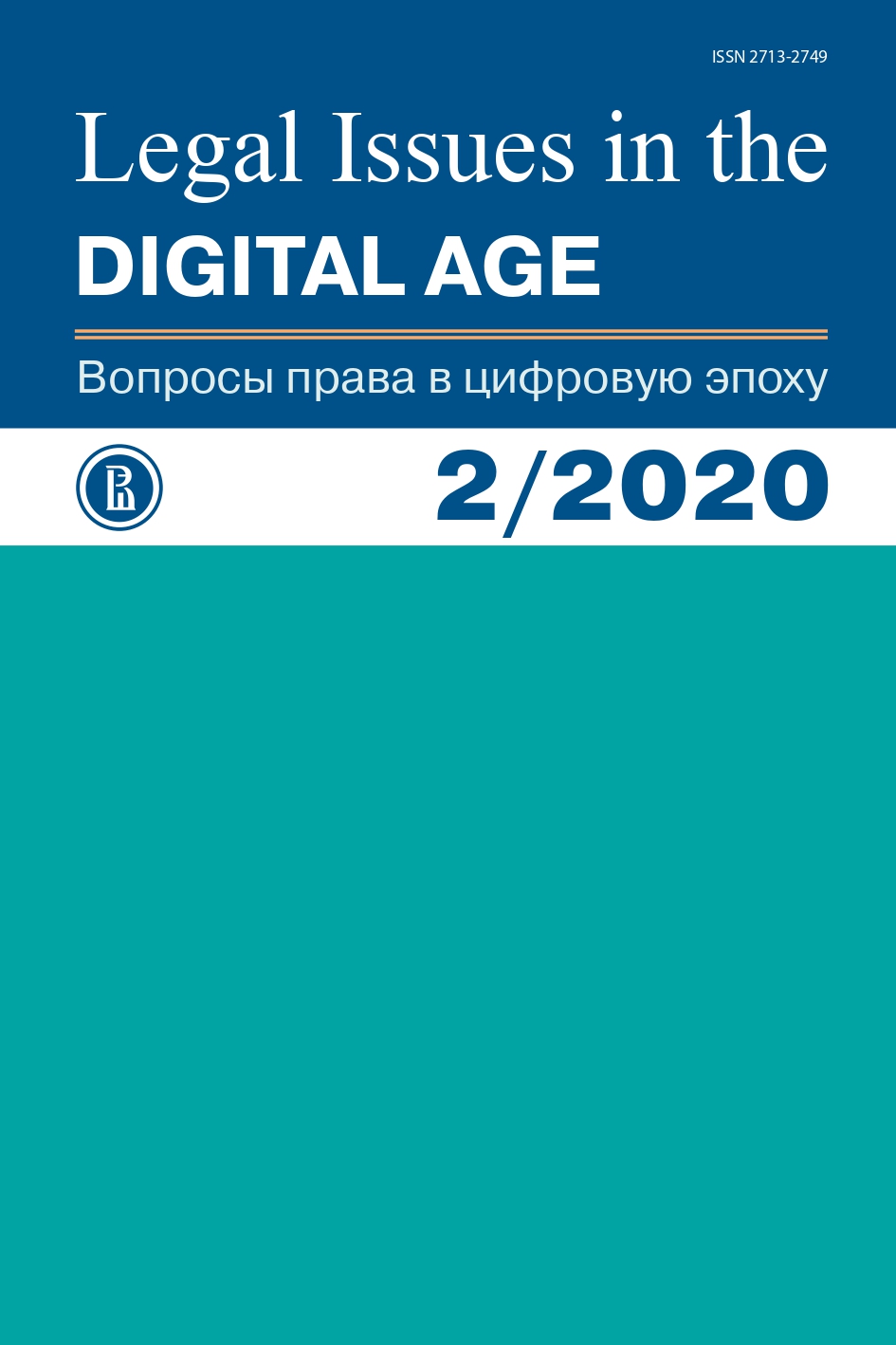Telemedicine: Current State and COVID-19 Lessons
Abstract
The pandemic is a watershed event that has prompted both an evaluation of the achievements of information and communications technology (ICT) and also a re-evaluation of the prospects for developing social processes compatible with ICT. Much has been already been accomplished in Russia and throughout the world. But in the current pandemic, telemedicine is facing new challenges. This article discusses the state of the art in telemedicine and the prospects for its development in the changing conditions wrought by the pandemic. Examples are provided of the solutions that telemedicine can offer in such a difficult period, and the risks due to widespread use of telemedicine are analyzed. The impact of telemedicine is extensive with consequences for technology, management, and law. This article is a multidisciplinary study of telemedicine from the perspective of management and law. The article examines how telemedicine technologies have been implemented and developed, the obstacles to telemedicine’s advance in various countries, and the legislative frameworks that governs it. The article’s interdisciplinary study is based on an integrated methodology which combines: a formal logical approach to analysis of the legislation concerning telemedicine; a comparison of the development of telemedicine across several countries; and a sociological method to identify the attitude of Russian medical staff toward telemedicine and its impact. Although telemedicine has been developed and regulated separately by each country, there are general development trends, such as collection and analysis of electronic health records (EHR), devices and systems to simplify communication between doctors and with chronically ill patients, and others. Legislation is one of the significant barriers to the development of telemedicine in different countries. However, the pandemic has been a catalyst for legislative change, and it is precisely those changes that will eliminate the key problem in telemedicine that beset Russia where telemedicine now resembles separate pieces in a puzzle.
Downloads
References
Babar S. et al (2011) Proposed embedded security framework for Internet of Things (IoT), 2nd International Conference on Wireless Communication, Vehicular Technology, Information Theory and Aerospace & Electronic Systems Technology (Wireless VITAE), Chennai, pp. 1–5.
Bodiroga-Vukobrat N. et al (2016) Personalized Medicine. A New Medical and Social Challenge. New York: Springer, 278 pp.
Burke W. et al (2019) Cybersecurity Indexes for eHealth, pp. 1–8. Available at: https://www.researchgate.net/publication/330371852_ (accessed: 01.10.2019)
Burleson W. & Carrara S. (eds.) (2014) Security and Privacy for Implantable Medical Devices. Berlin: Springer-Verlag, 205 p.
Carlisle G., Whitehouse D. & Duquenoy P. (eds.) (2013) eHealth: Legal, Ethical and Governance Challenges. New York: Springer, 396 pp.
Currie W. & Seddon J. (2014) A cross-national analysis of eHealth in the European Union: Some policy and research directions. Information & Management, vol. 6, pp. 783–797.
Davis K. et al (2014) Mirror, mirror on the wall. How the performance of the U.S. health care system compares internationally. Available at: http://www.common-wealthfund.org/~/media/files/publications/fund-report/2014/jun/1755_davis_mirror_mirror_2014.pdf (accessed: 01.08. 2019)
Demetrius K. (2014) Privacy Invading Technologies and Privacy by Design: Safeguarding Privacy, Liberty and Security in the 21st Century. Berlin: Springer, 338 pp.
Drexl J. (2016) Designing competitive markets for industrial data: Between propertisation and access. Max Planck Institute, Research paper no 16, 70 pp.
Flodgren G. et al (2015) Interactive telemedicine: effects on professional practice and health care outcomes. Cochrane Data base of Systematic Reviews, issue 9. Art. No.: CD002098. DOI: 10.1002/14651858.CD002098.pub2/ Available at:https://www.cochrane.org/CD002098/EPOC_interactive-telemed-icine-effects-professional-practice-and-healthcare-outcomes) (accessed: 12.05.2020)
Moy F.et al. (2019) Techniques of monitoring blood glucose during pregnancy for women with pre-existing diabetes. Cochrane Database of Systematic Reviews, issue 5, CD009613. DOI: 10.1002/14651858.CD009613.pub4. Available at: https://www.cochrane.org/CD009613/PREG_methods-monitoring-blood-glucose-pregnant-women-diabetes-improve-outcomes (accessed: 12.05.2020)
Oliveira T., Branquinho M. & Gonçalves L. (2012) State of the art in telemedicine. Concepts, management, monitoring and evaluation of the telemedicine program in Alentejo. Studies in Health Technology and Informatics, vol. 179, pp. 29–37.
Purtova N.N., Kosta E. & Koops E. (2015) Laws and regulations for digital Health. In: S. Fricker et al (eds.) Requirements Engineering for Digital Health. Berlin: Springer, pp. 47–74.
Putilo N.V. & Volkova N.S. (2018) Telemedicine: Societal Needs and Possibilities of Legislation. Zhurnal rossiyskogo prava, no 6, pp. 124-135 (in Russian)
Sicari S. et al (2017) A policy enforcement framework for Internet of Things applications in the smart health. Smart Health, September 2017, pp. 39–74.
Sjöberg C. (2017) Swedish Proposal for Research Data Act. Paper presented at XXXII Nordic Conference on Legal Informatics. Available at: http://www.jus.uio.no/ifp/om/organisasjon/seri/arrangementer/2017/sjo%CC%88berg.pdf. (accessed: 29.04.2020)
Wernick A. & Klünker I. (2019) Prohibitions on long distance treatment: Historical roots and continuities in limiting the use of electronic telemedicine. In: T. Bächle & A. Wernick (eds.) The Futures of eHealth. Social, Ethical and Legal Challenges. Berlin: Humboldt Institute for Internet and Society, pp. 169–177. Available at: http://doi.org/10.5281/zenodo.3297377 (accessed: 12.05.2020)
Authors who publish with this journal agree to the Copyright Notice.



